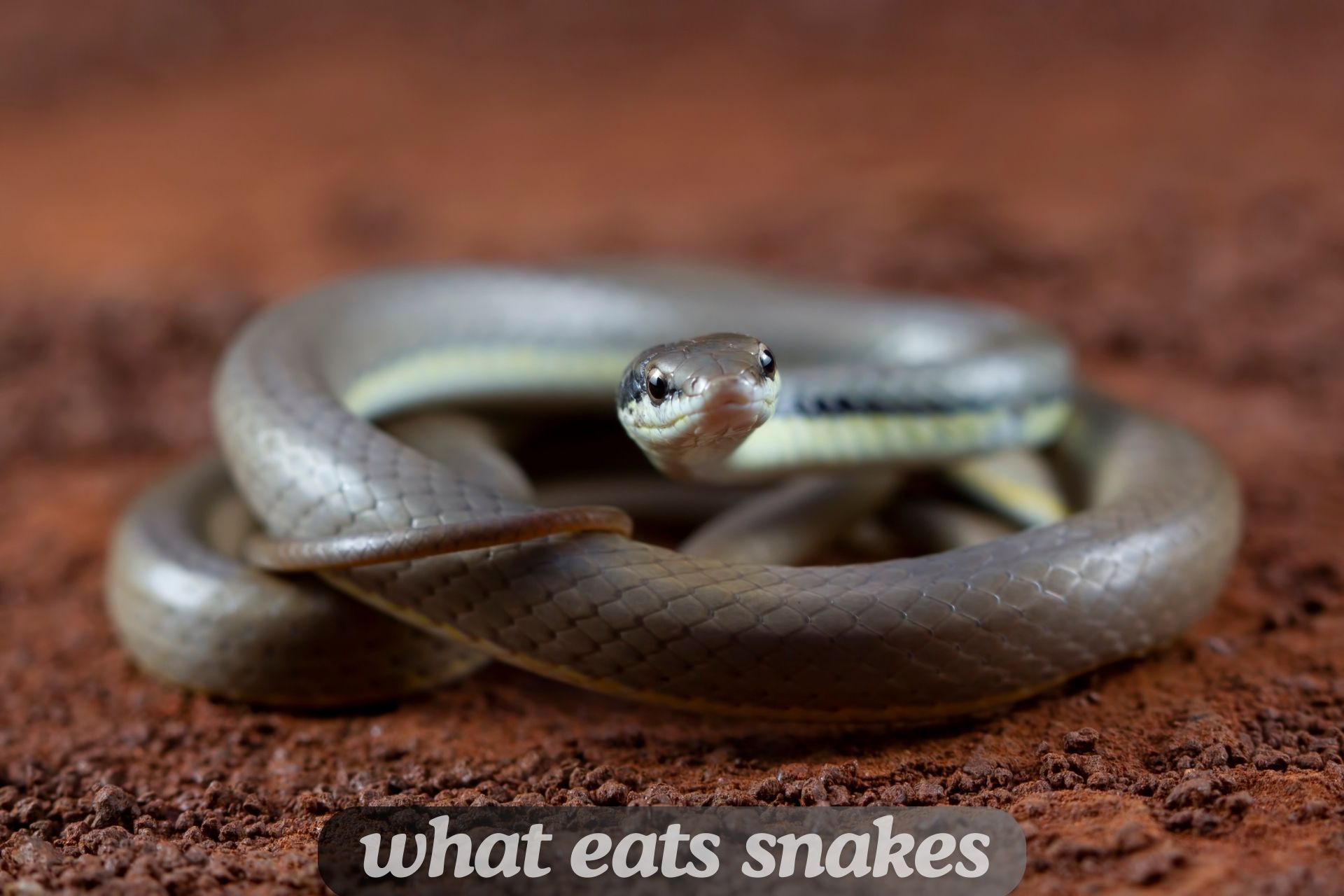Welcome to the wild world of snake predators! Ever wondered who lurks in the shadows, ready to make a meal out of these slithering reptiles? From fierce mammals to agile birds and even stealthy amphibians, there’s a whole cast of characters playing the role of snake hunter. Join us on this thrilling journey as we uncover the ultimate guide on what eats snakes in their natural habitats. Get ready for some surprising revelations and fascinating insights into the circle of life in the animal kingdom!
Mammals that Prey on Snakes
When it comes to the predators of snakes in the wild, mammals play a significant role in keeping snake populations in check. Some mammals are skilled hunters that actively seek out snakes as part of their diet.
Mongoose, known for their agility and quick reflexes, are formidable snake hunters. They are immune to certain types of snake venom and can take down even highly venomous species with ease.
Other mammalian predators like foxes and coyotes also feed on snakes when the opportunity arises. Their keen sense of smell helps them locate hidden snakes in burrows or under rocks.
Large carnivores such as big cats including jaguars and cougars have been known to prey on snakes, showcasing their strength and hunting prowess in taking down these reptiles.
Even smaller mammals like weasels are not afraid to tackle a snake for a meal. Their slender bodies allow them to navigate tight spaces where snakes may hide, making them effective hunters in the wild.
Birds of Prey and Snakes
Birds of prey are formidable hunters that play a crucial role in the ecosystem by keeping snake populations in check. Raptors like hawks, eagles, and owls have keen eyesight and sharp talons, making them efficient snake hunters. These aerial predators use their superior vision to spot snakes from great distances before swooping down for the kill.
Hawks are known for their speed and agility, while eagles possess incredible strength to take down larger snake species. Owls are stealthy nocturnal hunters, silently gliding through the night to surprise unsuspecting snakes. Regardless of their hunting techniques, birds of prey serve as important natural predators of snakes.
Their presence helps maintain a balance in nature by controlling snake numbers and preventing overpopulation. As apex predators themselves, birds of prey rely on snakes as a food source to sustain their own populations. This intricate web of predator-prey relationships highlights the interconnectedness of wildlife in the wild.
Reptile Predators of Snakes
Reptiles, the cold-blooded counterparts of snakes, are not always on friendly terms with their slithery neighbors. Some reptiles have a taste for snake meat and see them as a potential meal. Snakes must constantly be wary of other reptiles lurking in their habitat.
One of the most well-known reptile predators of snakes is the king cobra. This formidable serpent can overpower and consume other snakes, including its own kind. The sight of a king cobra crossing paths with a snake is not one for the faint-hearted.
Another group of reptilian adversaries to snakes are monitor lizards. These agile creatures have sharp teeth and powerful jaws that they can use to hunt down and devour unsuspecting serpents. With their keen sense of smell and quick reflexes, monitors pose a significant threat to snakes in their environment.
While some may view these interactions as brutal or savage, it’s all part of nature’s intricate web where every creature plays its role in maintaining balance.
Amphibians as Snake Eaters
Amphibians are often overlooked when it comes to their role as snake predators in the wild. Many species of amphibians, such as frogs and toads, have been known to consume snakes as part of their diet. These creatures may not seem like typical snake hunters, but they can be surprisingly effective at catching and eating them.
Frogs, with their sticky tongues and lightning-fast reflexes, are particularly adept at capturing small snakes that come too close. Toads, on the other hand, rely more on their powerful jaws to subdue their slithery prey. Salamanders also play a role in keeping snake populations in check by preying on them in various habitats.
Despite their smaller size compared to mammals or birds of prey, amphibians contribute significantly to maintaining the balance of ecosystems by controlling snake populations. This interplay between different species highlights the intricate web of relationships within nature’s food chain.
Invertebrate Predators of Snakes
Invertebrates are some of the lesser-known predators of snakes in the wild. Creatures like centipedes, scorpions, and large spiders may not immediately come to mind when thinking about snake predators, but they play a significant role in controlling snake populations.
Centipedes with their numerous legs and venomous bite can overpower small snakes. Their speed and agility make them formidable opponents for unsuspecting serpents hunting for prey.
Scorpions, armed with stingers filled with potent venom, pose a threat to even larger snake species. A sting from a scorpion can immobilize a snake quickly, making it an easy meal for these arachnids.
Large spiders, such as tarantulas, have been known to capture and consume juvenile snakes that wander too close to their webs. These eight-legged hunters use silk threads to restrain their prey before injecting them with venom.
While invertebrates may not be at the top of the food chain compared to mammals or birds of prey when it comes to preying on snakes, they certainly play an essential role in maintaining ecological balance.
How Do These Animals Hunt and Consume Snakes?
When it comes to hunting and consuming snakes, different animals have unique tactics. Mammals like foxes and raccoons use their keen sense of smell to track down snakes hiding in burrows or under rocks. Birds of prey, such as eagles and hawks, swoop down from the sky with precision to grab snakes with their talons.
Reptile predators like kingsnakes and rattlesnakes overpower their snake prey by constricting them or injecting venom. Amphibians like bullfrogs wait patiently by the water’s edge for unsuspecting snakes to come close before striking with lightning speed.
Invertebrates such as centipedes and spiders immobilize snakes using powerful venom or wrapping them in silk for later consumption. Each predator has evolved specific strategies to hunt and consume snakes efficiently, showcasing the diverse ways nature operates within ecosystems.
The Role of Snakes in Their Ecosystem
Snakes play a crucial role in their ecosystem as both predators and prey. As predators, they help control populations of rodents, insects, and other small animals, thus maintaining the balance of the food chain. By keeping these populations in check, snakes prevent overgrazing and protect vegetation.
On the other hand, snakes also serve as important prey for larger predators such as birds of prey and mammals. Their presence provides sustenance for various species higher up in the food chain. Additionally, snake skin sheds provide a valuable source of nutrients for soil health and decomposition processes.
Moreover, snakes contribute to biodiversity by occupying different niches within their habitats. Different snake species have adapted to various diets and environments, showcasing nature’s diversity at its finest. Without these fascinating creatures, ecosystems would suffer from imbalances that could have far-reaching consequences on the entire web of life.
Human Impact on Snake Populations
Human activities have a significant impact on snake populations in the wild. Urbanization, deforestation, and pollution all contribute to habitat destruction for these fascinating creatures. As humans expand into natural habitats, snakes often face increased encounters with people, leading to conflicts and sometimes death.
Snakes are also targeted by humans out of fear or misunderstanding. Many are killed deliberately or accidentally through activities like road construction or agriculture. Illegal wildlife trade poses another threat to snake populations, as they are often captured for their skins, meat, or use in traditional medicine.
Climate change is another factor affecting snake habitats and behaviors. Shifts in temperature and precipitation patterns can disrupt food sources and breeding cycles for snakes. It’s crucial for us to be aware of our impact on these important predators and maintain a balance between human development and wildlife conservation efforts.
Conclusion
As we delve into the intricate web of predator-prey relationships in the wild, it becomes evident that snakes play a crucial role in maintaining ecological balance. They serve as both predators and prey, contributing to the delicate harmony of their ecosystems.
While various animals such as mammals, birds of prey, reptiles, amphibians, and invertebrates may hunt and consume snakes, each species has its unique adaptations and strategies for survival. The diversity of snake predators highlights the complexity and resilience of nature’s food chains.
It is essential to appreciate the significance of every creature in its natural habitat. By understanding what eats snakes and how these interactions shape their populations, we gain a deeper appreciation for the intricacies of the natural world. Let us continue to observe, learn from, and protect these fascinating creatures for generations to come.











